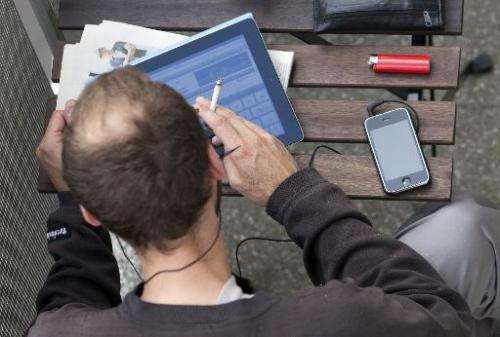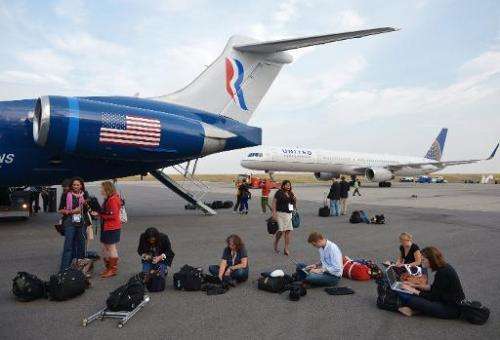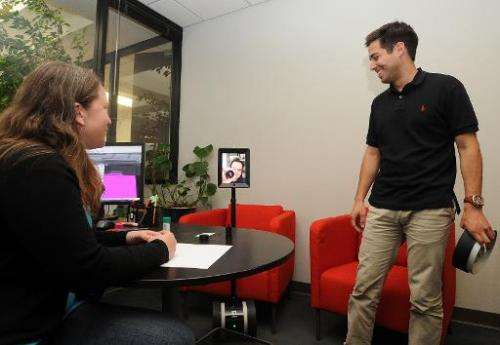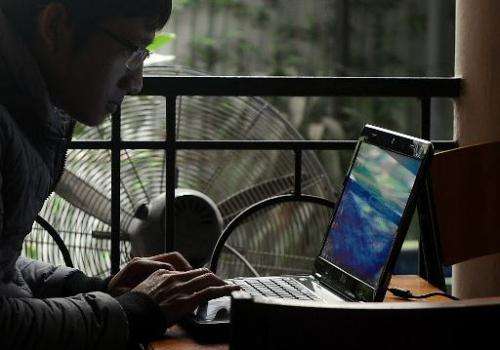Workspace of the future: everywhere

The workspace of the future is a lot more than a typical office cubicle.
It may be a coffee shop, the living room, an airport terminal, or anywhere technology can provide connections.
Laptops already allow many people to work remotely, but the trend is gaining momentum with advances such as virtual reality avatars and telepresence robots.
"People are working not only from home but from wherever it is convenient," says Ted Schadler, an analyst at Forrester Research who studies mobile collaboration technology.
"Some people may leave early and then work at home after they put the kids to bed."
A 2012 survey by software firm Citrix found 90 percent of US employers allowed "mobile work styles."
And the practice is almost as widespread in China (85 percent), Brazil (81 percent), India (77 percent), Britain (72 percent), France and Germany (71 percent each).
The next leap may be the introduction of technologies to allow robots or virtual reality to fill the gap of face-to-face communications.
So-called telepresence robots allow a kind of videoconferencing.
A product made by California startup Double Robotics uses an iPad attached to a self-balancing scooter which can roam around an office and interact with colleagues.
The robots have been satirized on television comedies, but Jay Liew of Double Robotics says companies are warming to them.
"We've had customers tell us they can't remember when the person was really there and when the robot was there," Liew told AFP.
"After the initial excitement wears off, it's not just a robot. It's John. It's Connie, from the Seattle office."
And the person working remotely can get be a part of the "team" by moving around the office, chatting in the break room, or "stopping by" a colleague's desk to ask a question.

Another technique allows people to interact in a cartoon-like world via their "avatars"—or images they create.
Jeremy Bailenson, director of the Virtual Human Interaction Lab at Stanford University, said virtual meetings can in many cases be better than those taking place face-to-face.
Virtual handshake
"People say there is nothing like the handshake and eye contact," he said. "I build systems that allow you to have that handshake and eye contact."
Bailenson says an individual can tweak his or her avatar to produce features and body language.
"So I can do things in a virtual meeting that can make me a more effective sales person, make me a better leader," he told AFP.
Bailenson said virtual reality offers a host of advantages such as reducing commuting fuel costs and road accidents and saving time.
But for it to gain mass adoption, it should be more natural, without the cumbersome helmets and sensors now required.
Bailenson added that Facebook's $2 billion acquisition of the virtual reality firm Oculus Rift suggests the trend may be accelerating.
Facebook founder Mark Zuckerberg recently visited his lab "so maybe we are at a tipping point."
Ford has begun using virtual reality in its Immersion Lab, allowing design engineers to collaborate on items like sideview mirrors and concealed windshield wipers.

Like 'Second Life'
The auto giant says the collaboration is "like a Second Life game," referring to the popular 3D virtual world game.
"We now have Ford designers and engineers around the world working together virtually – inside and side-by-side – on the same product," said Ford virtual reality specialist Elizabeth Baron.
Kori Inkpen Quinn, who studies human-computer interaction at Microsoft Research, said her studies suggest colleagues are comfortable with video interaction such as with a telepresence robot but that most are not ready for the cartoonish avatars of virtual reality.
"Even if I'm comfortable looking like a cat, you might not be comfortable having a business meeting with a cat," she said.
Lindsey Pollak, a workplace consultant for the insurance firm The Hartford, says changes may be driven by younger tech-savvy people coming into the workforce.

"They are digital natives and expect the workplace will be as digital savvy and as flexible as they've seen in the consumer market," she told AFP.
One problem is that employees may face more stress because they never really stop and disconnect from work.
A recent Gallup survey found one-third of full-time workers say their employer expects them to check email and stay in touch after the business day ends.
"This is becoming the new normal and it is creating tremendous stress," Pollak said. "Stress and depression is one of the reasons Millennials are taking disability leave."
© 2014 AFP



















